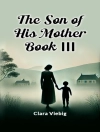Harold Frederic’s ‘In the Valley’ is a profound exploration of the complexities of rural life in late 19th-century America, capturing the delicate interplay between personal ambition and the weight of tradition. Frederic employs a rich, descriptive prose style that immerses the reader in the atmospheric landscape of the Hudson River Valley, blending realism with an almost lyrical quality. Set against the backdrop of societal change, the narrative intricately weaves the lives of its characters, reflecting the conflicts arising from love, economic survival, and the inexorable passage of time, all while drawing upon the literary traditions of realism that were emerging during his era. Born in 1856 in upstate New York, Frederic’s intimate knowledge of his surroundings profoundly informs his writing. His experiences as a newspaper correspondent in both the United States and Europe imbued him with a unique perspective on society, which he infuses into his storytelling. This background equips him to portray the struggles of his characters with authenticity, as he keenly observes the impact of industrialization on rural communities, enabling a richer understanding of his characters’ motives and desires. Readers seeking a thoughtful examination of the human condition amidst the vicissitudes of life will find ‘In the Valley’ an enlightening and immersive read. Frederic’s nuanced characterizations and evocative settings invite readers to ponder the resilience of the human spirit in the face of societal and personal upheaval. Highly recommended for those interested in American literature and the naturalistic tradition, this work remains a poignant reflection of a bygone era.
Yazar hakkında
Harold Frederic (1856–1898) was an American journalist, editor, and novelist known for his realistic fiction and complex characters. Born in Utica, New York, Frederic began his career as a journalist and worked his way up to become the London correspondent for The New York Times. His experience abroad informed much of his fiction, which often delved into issues of morality, social change, and the tension between traditional and modern values. ‘In the Valley’ (1890), one of Frederic’s significant works, is a historical novel set during the American Revolutionary War. It offered a vivid portrayal of life in the Mohawk Valley of New York during a tumultuous era, showcasing Frederic’s talent for richly detailed settings and psychological complexity. The novel displays his literary style characterized by a mix of naturalistic elements and narrative power, capturing the nuances of human behavior within a specific historical context. Frederic’s body of work includes both fiction and commentary, yet he is perhaps best remembered for his novel ‘The Damnation of Theron Ware’ (1896), regarded by many as his masterpiece. This later work further established Frederic’s reputation as a significant literary figure who explored the contradictions of American life at the turn of the century. Sadly, his life was cut short when he died of a stroke at the age of 42, but his contributions to American literature continue to be appreciated by scholars and readers alike.












